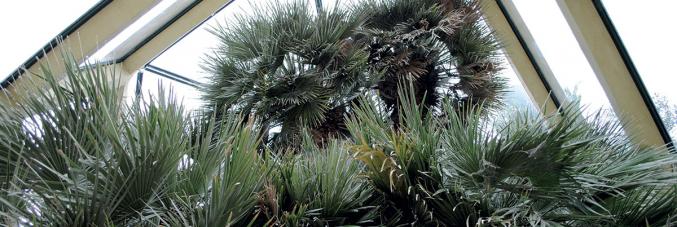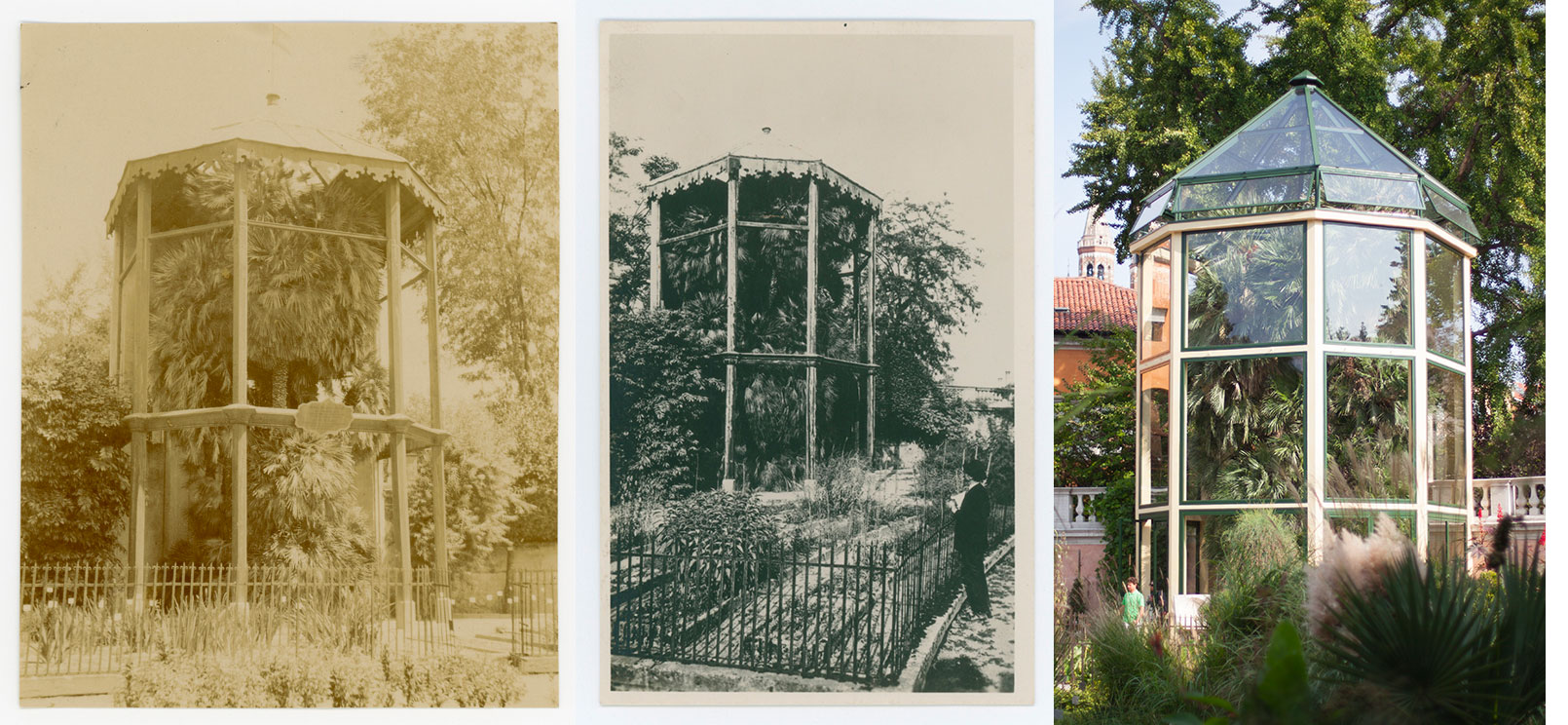
Genome of Goethe’s Palm at the University of Padua Botanical Garden sequenced
10.09.2025
The study “Chromosome-level assembly of the 400-year-old Goethe’s Palm (Chamaerops humilis L.)” has been published in Scientific Data. Coordinated by Francesco Dal Grande of the University of Padua, and carried out in collaboration with the Center for Genomic Biodiversity in Frankfurt and other international partners, it reports the first high-quality, chromosome-level genomic sequencing of the Mediterranean dwarf palm, performed on the “Goethe’s Palm” at the University of Padua Botanical Garden.
The rapid decline of global biodiversity highlights the need to increase conservation efforts. Botanical gardens worldwide play a crucial role in the ex situ conservation of plants. Monumental plants, in particular, hold great ecological and cultural value, which must be safeguarded.
The specimen of dwarf palm or Saint Peter’s palm (Chamaerops humilis L.), planted in 1585, is the oldest plant in the Padua Botanical Garden and is known as Goethe’s Palm. After admiring it on 27 September 1786, the German poet drew inspiration from it to develop an evolutionary insight in his essay The Metamorphosis of Plants (1790), thus forever linking his name with that of the “Paduan” palm. Over time, Goethe’s Palm has become a symbol of the deep bond between science, culture, and nature.
The dwarf palm grows spontaneously along the coasts of the western Mediterranean in degraded scrub formations, often in inaccessible places to escape exploitation and avoid human impact. A legacy of Italy’s Tertiary flora (around 65 million years ago), it is today the only native palm species that survived the glaciations affecting Europe up until 12,000 years ago.
“Today, almost 240 years later, we set out again from the same palm to embark on a new journey. We did this in collaboration with the Center for Genomic Biodiversity in Frankfurt am Main, Germany – Goethe’s birthplace. And we obtained a genome of the highest quality. At the University of Padua Botanical Garden we sequenced the genome of Goethe’s Palm, the oldest cultivated palm preserved in a botanical garden,” explains Francesco Dal Grande, Professor of Systematic Botany and Applied Ecology at the University of Padua’s Department of Biology. “This is the first genome of the Mediterranean dwarf palm, Chamaerops humilis, the only native palm of continental Europe and the northernmost distributed palm species. In our study, we found that its DNA contains a huge number of repeated sequences: traces of ancient adaptations that most likely allowed the species to thrive in arid and hot climates such as those of the Mediterranean. The genome we obtained also revealed a historical secret: the origin of this plant. The genomic data clearly indicate a connection between this palm and populations in the western Mediterranean area, the Iberian Peninsula and Morocco. This is an example of how DNA can feed history, when documents alone are not enough. At a time of severe biodiversity decline, knowing the genome of a species so thoroughly is a major advantage – a powerful tool to understand it, protect it, and preserve it over time.”
“Thanks to the research published today, we now know more about our symbol, Goethe’s Palm of 1585, and about its provenance,” says Tomas Morosinotto, Prefect of the Botanical Garden. “By using the most advanced analytical methods, we can understand how the oldest plant in our Botanical Garden adapted to a climate that was not originally its own: a contemporary study on a plant with more than four centuries of history, in the era of climate change.”
In this new study, Dal Grande and colleagues present the first high-quality, chromosome-level genome assembly of Chamaerops humilis L., obtained using cutting-edge technologies that allow DNA to be read and organized with extreme precision (PacBio HiFi and Arima Hi-C). To date, this genome is the most contiguous and complete within the palm family (Arecaceae), with 88% of its content consisting of repeated sequences, 63% of which are attributed to Long Terminal Repeat (LTR) elements. Such a high content of repeated sequences shows that the genome was shaped by intense evolutionary pressures, most likely linked to the Mediterranean climate.
The study also presents the first comprehensive analysis of microRNAs in a palm. MicroRNAs are small regulatory molecules that control which genes are switched on or off. For the first time in palms, the miR827 family has been identified, which in plants helps regulate the uptake of key nutrients such as phosphorus and nitrogen. Finding a previously unknown microRNA family in palms opens new avenues for understanding how plants respond to environmental stresses and nutrient deficiencies.
Finally, through microsatellite analysis – short repeated DNA sequences used to trace genetic origins – the research team discovered that the Paduan specimen shares affinities with populations from the western Mediterranean, particularly Morocco and the Iberian Peninsula.
These results represent a significant advance in the conservation genomics of the species and lay the groundwork for new conservation strategies. In this context, botanical gardens are, and increasingly will be, key players in safeguarding global biodiversity.

Palama di Goethe on1908, 1938 and today



